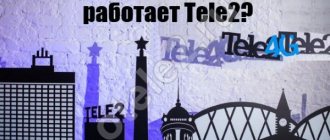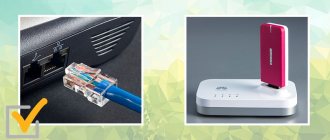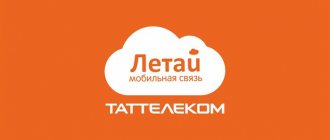The question of choosing a mobile operator is purely individual due to the different requirements of each of us: some need the cheapest and fastest mobile Internet, others need many minutes, and others generally need the opportunity to make inexpensive calls abroad.
Below we will compare the Big Four operators on such parameters as the quality of communication and mobile Internet, 4G coverage map and tariff availability, and also analyze user reviews, according to which a rating of Russian cellular operators will be compiled.
The best mobile operators 2020-2021
The comparison involves the four largest domestic operators, namely:
- MTS
- Megaphone
- Beeline
- Tele 2
We do not consider the fairly popular company Yota, since it is a subsidiary brand of Megafon. Iota does not have its own communication towers and uses the infrastructure of the parent organization to provide services, and therefore is completely dependent on it.
Voice quality
Statistical data on the percentage of unsuccessful voice connection attempts by subscribers from different operators will help us objectively assess the quality of communication. This information was obtained as a result of testing conducted by Roskomnadzor in Moscow and the largest cities of Russia.
The quality of voice communication was assessed according to two parameters: the number of unsuccessful connections and interruptions during the conversation, as well as the average speech intelligibility and the proportion of unintelligible connections.
Percentage of voice connection failures and interruptions during a conversation:
- MegaFon - 0.7%
- MTS - 0.8%
- Tele2 - 1.2%
- Beeline - 15.1%
An obvious outsider is Beeline, whose defect rate is more than 10 times higher than that of other operators. Also, the yellow ones were behind everyone else in terms of intelligibility of transmitted speech, problems were observed in 4.3% of cases. The leader here is Tele2, whose subscribers complained about the audibility of the interlocutor only in 0.1% of cases.
But when it comes to sending text messages, Beeline is ideal, it demonstrates an uncompromising 0% defect rate and delivers absolutely every message.
Percentage of SMS messages not received:
- Beeline - 0%
- Tele2 - 1.2%
- MegaFon - 1.7%
- MTS - 2.4%
But no matter how good the operator is in terms of SMS, can this be considered sufficient compensation for poor communication, taking into account the fact that text communication now takes place mainly in instant messengers and social networks?
Mobile Internet quality
The map of 4G coverage in Russia, provided by the Ministry of Telecom and Mass Communications, shows that in terms of LTE coverage area, the leaders by a significant margin are Megafon and MTS (in terms of the absolute number of 4G towers, MegaFon is the first).
But the outsider here is the relatively young Tele2, so if you want to purchase a Tele2 SIM card for the Internet, first carefully study the coverage map.
Regarding 3G coverage, things are similar.
In terms of average mobile Internet speed, Megafon is in the lead, and Beeline is again in last place.
Average Internet speed (Mbit/s):
- MegaFon - 13.1
- MTS - 10.1
- Tele2 - 9.4
- Beeline - 5
So that you can decide who has the best tariff offers, we recommend that you familiarize yourself with our large comparison of current tariffs for unlimited Internet from MTS, Megafon, Beeline and MTS.
Which operator is more profitable?
It is difficult to compare the pricing policies of operators, since subscription fees for the same service can vary greatly depending on the region. However, here the results obtained by analysts from ComNews come to the rescue, according to which the most profitable operator when using the so-called “small basket” (without mobile Internet and additional services) turned out to be MTS, but at the same time, in terms of the average cost of connected services, MTS is the most expensive operator. This only indicates that the red ones offer tariffs that can satisfy both the most economical users and those who want to use their phone to the maximum.
Rating of cellular operators from cheapest to most expensive:
- Tele 2.
- Beeline.
- Megaphone.
- MTS.
And the positions here are quite logical: Tele2, which recently entered the market, is trying to provide the cheapest services possible in order to attract new subscribers to its ranks.
3G, 4G and 5G - what's the difference
The fundamental difference between the technologies affects several aspects:
- The reference bandwidth of a signal in the radio frequency spectrum. The higher the generation of technology, the more space it takes up, and the more subscribers one transmitter serves.
- Data transfer rate. With each generation, the speed increases tenfold.
- Encryption and compression algorithms are improving with each generation.
5G technology is being developed not only for the interaction of people and devices, but also for the so-called Internet of Things (IoT) - a concept in which technical means interact with each other and make decisions without human intervention.
Reviews about mobile operators
At this point, we collected the general impression of users about operators, based on their publications on review aggregators, forums and social networks.
MTS
Users consider one of the main advantages of MTS to be the fact that it has good reception everywhere and allows you to call from almost anywhere in Russia. The signal does not disappear even outside of large cities, and directly on their territory it is consistently good everywhere. MTS is the most popular operator in the Russian Federation, with about 78 million users, according to whom it is the best telecom operator in the country.
MTS is often noticed to be cunning when announcing the terms of new tariffs, which have a large number of restrictions indicated in fine print. Users also complain about paid services being connected without the subscriber’s knowledge. However, the problem is not widespread and indignation is most often heard from subscribers who do not understand their tariffs.
More disadvantages that irritate users:
- It's hard to get through to Live Support.
- In salons, users who are far from technology are forced to use unnecessary services.
As for the rest, MTS fully justifies its leading position in the mobile communication services market. They have consistently high Internet speeds, good connections, and affordable tariffs.
Megaphone
MegaFon began installing 4G towers earlier than other competitors, which firmly secured its title as the operator with the fastest mobile Internet, and this is true. In addition, MegaFon’s personal account is a very convenient service that surpasses similar applications from other operators in functionality. However, the path to this miracle was thorny and long; MegaFon was previously famous for the anecdotal crookedness of its online services, and the work of USSD teams was far from ideal.
In terms of the frequency of imposing unnecessary services, MegaFon can be compared with MTS. However, inattentive subscribers who like to click anywhere and not read confirmation requests will suffer everywhere. Today, although MegaFon does not have the most favorable pricing policy, it provides consistently high quality communications and mobile Internet. It is noteworthy that the company is trying to retain customers who want to switch their number to other operators by offering them a 50% discount on popular tariffs.
Tele2
Tele2 entered the Russian market later than other operators, and therefore throughout its existence it was forced to play the role of catching up, which, in turn, turned out to be beneficial for subscribers. Despite the relatively small number of cellular towers, Tele2 has normal coverage in most large cities and regions of the Russian Federation, and also provides the most favorable tariff conditions and is distinguished by the highest loyalty to users.
Beeline
Beeline, once one of the most popular mobile operators, has been losing its popularity for several years in a row. Low Internet speed, mediocre communication quality, and less favorable tariffs compared to competitors have an impact. For almost all points of comparison, Beeline was in last place; today there is absolutely nothing to attract new clients from this company and now it is one of the least interesting options for connecting.
This is where the comparison comes to an end; let everyone draw their own conclusions, taking into account the needs, quality of communication and pricing policy of operators in your region. What do you think is the best mobile operator?
Subscribe to our Yandex.Zen so as not to miss cool articles
Telegram channel with the best discounts and prompt news updates
Geekville on VKontakte - our group with all the latest content
Further development of LTE
“Real” 4G should provide data transfer speeds of up to 1Gbps. But the first LTE standard clearly did not reach these figures. It took another half a decade to reach this value. This is how the LTE Advanced (4G+) standard appeared. The increase in speeds was achieved due to:
- modernization of data package packaging technology;
- increasing signal bandwidth;
- using several transmitters to work with one subscriber.
You can see a coverage map of communication networks of all standards in your city on the website of the Ministry of Telecom and Mass Communications.
Since the official announcement of the creation of the technology to this day, active work has been carried out to make data transfer faster. Over the past 11 years, many solutions have been implemented. But in the future, LTE is still inferior to 5G, because it cannot withstand the increasing flow of technical means.
The first generation is 1G.
In 1984, the first generation of mobile communication technology, 1G, came into commercial use and it operated on an analog data transfer method. At that time, analogue systems were used and only voice calls were possible. After all, it was developed only for voice calls. The cost of a minute of conversation in the 80s was very high and a mobile phone in those years was considered an expensive and rare pleasure.
The first generation had its drawbacks, namely:
- Low capacity.
- Lack of any encryption.
- It was possible to listen to voice calls.
- Roaming problems.
- High weight and cost of user terminals.
- There is a complete lack of effective methods to combat signal fading, even when the subscriber moves.
Types of phones.
Cellular (mobile) phone is a subscriber terminal operating in a cellular network. In fact, each cell phone is a specialized computer, which is focused primarily on providing (in the coverage area of a home or guest network) voice communication for subscribers, but also supports the exchange of text and multimedia messages, is equipped with a modem and a simplified interface. Modern mobile phones provide voice and data transmission in digital form.
The earlier division of devices into “inexpensive”, “functional”, “business” and “fashion” models is increasingly losing its meaning - business devices acquire the features of image models and entertainment functions; as a result of the use of accessories, inexpensive phones become fashionable, while fashionable ones functionality is growing rapidly.
The miniaturization of handsets, which peaked in 1999–2000, ended for quite objective reasons: the devices have reached an optimal size, their further reduction makes it inconvenient to press buttons, read text on the screen, etc. But the cell phone has become a real object of art: leading designers are involved in developing the appearance of the devices, and owners are given ample opportunities to personalize their devices themselves.
Currently, manufacturers are paying special attention to the functionality of mobile phones, both basic (increasing battery life, improving screens, etc.) and their additional capabilities (digital cameras, voice recorders, MP3 players and other “related” devices are built into the devices). » devices).
Almost all modern devices, with the exception of some models in the lower price range, allow you to download programs. Most devices can run Java applications, and the number of phones using operating systems inherited from PDAs or ported from them is increasing: Symbian, Windows Mobile for Smartphones, etc. Phones with built-in operating systems are called smartphones (from the combination of the English words “smart” and “phone” - “smart phone”).
Today, communicators can also be used as subscriber terminals - pocket computers equipped with a module supporting GSM/GPRS, and sometimes EDGE and third generation standards.











